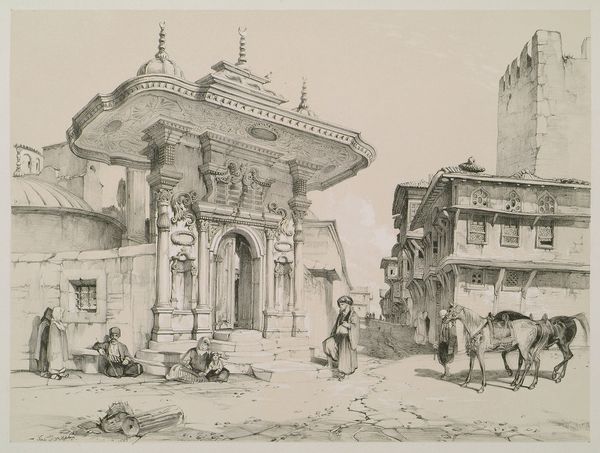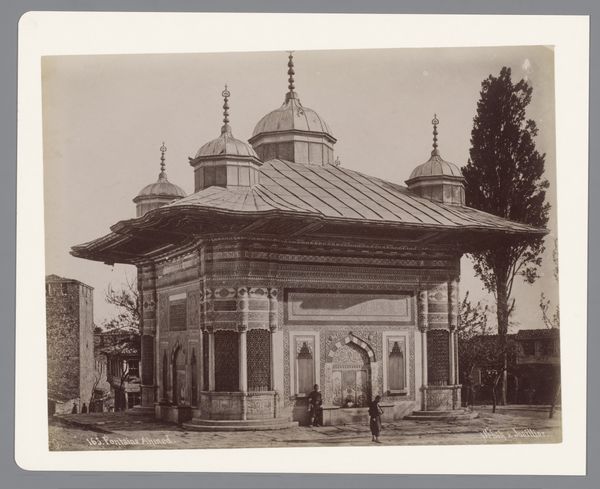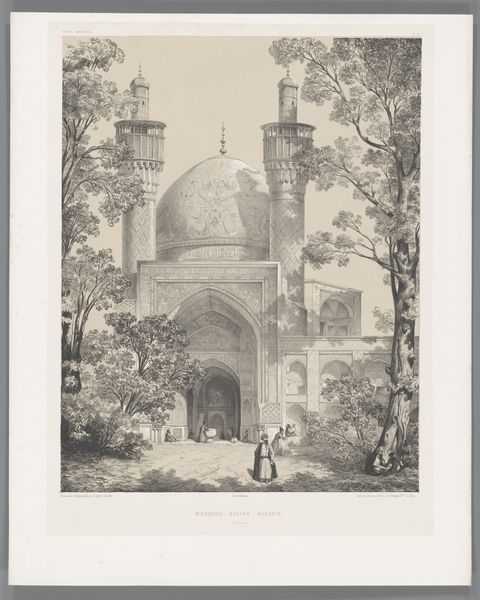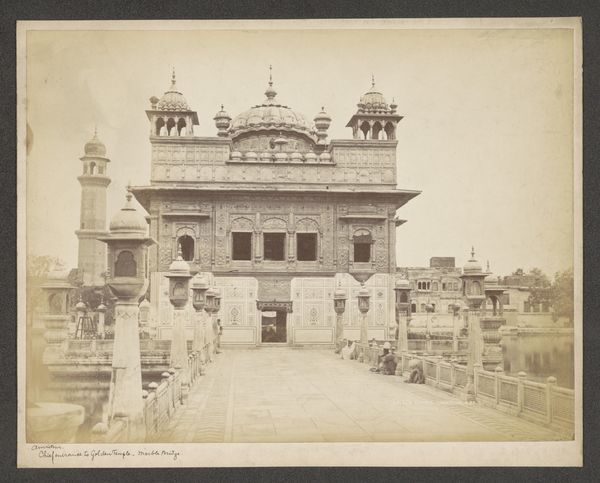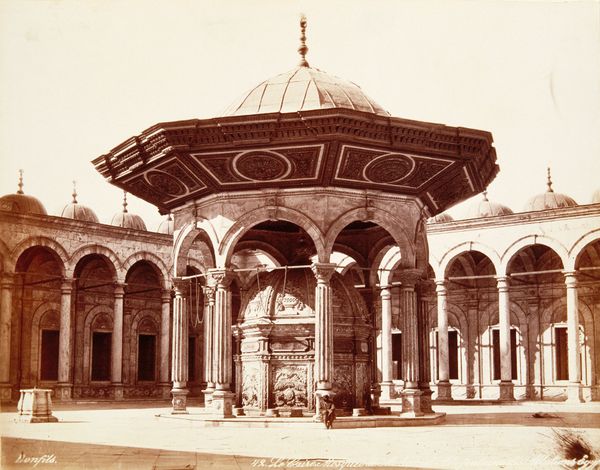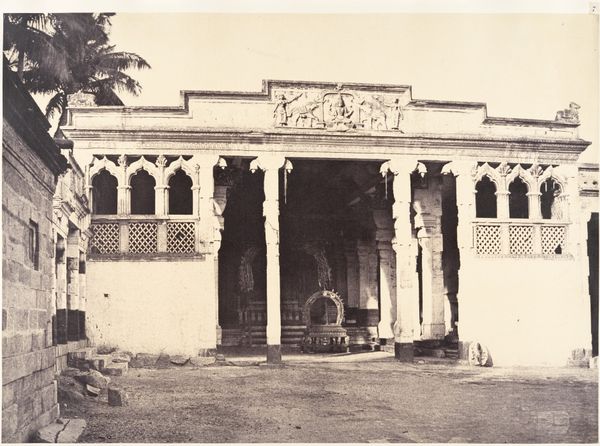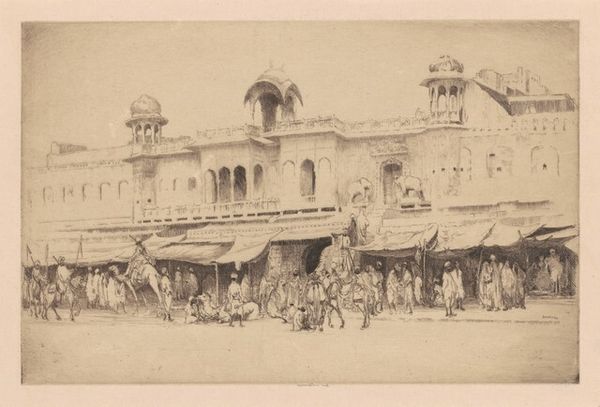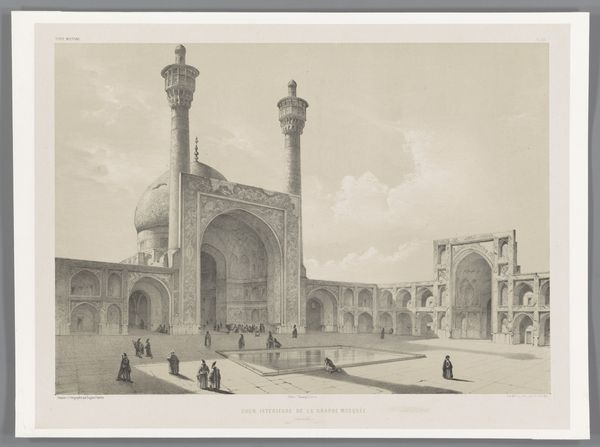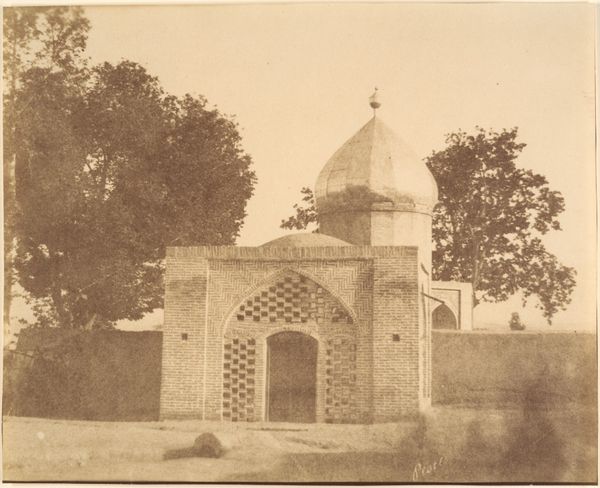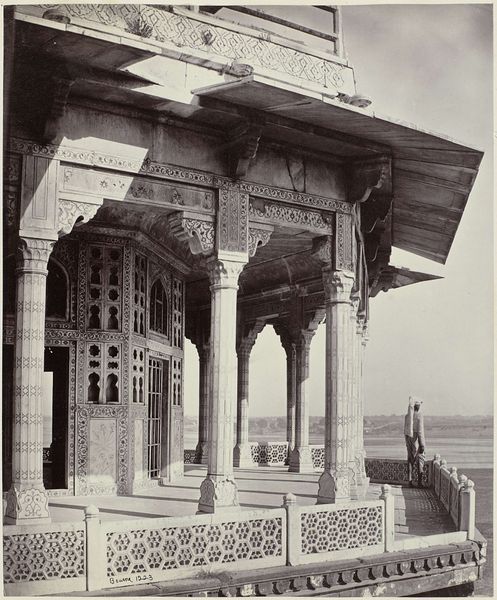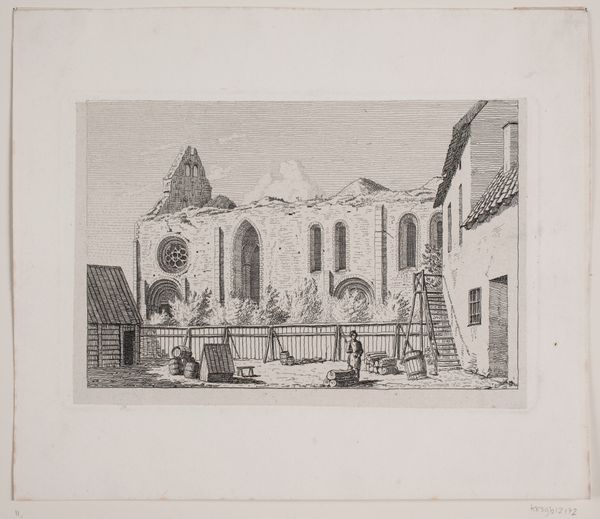
drawing, print, etching
#
drawing
# print
#
etching
#
landscape
#
etching
#
cityscape
#
islamic-art
Copyright: Public domain
Curator: John Frederick Lewis’ etching, “Fountain of the Gate of Eski (old) Serai," from 1838, presents a view of Istanbul with its ornate water fountain taking center stage. Editor: Immediately, I'm struck by the intricacy. It’s not just a landscape; it’s a dense tableau. The way Lewis captures the light makes it feel like a captured moment in a bustling public space. Curator: Absolutely, notice the placement of the fountain— a vital nexus, a gathering place at the gate. Water, symbolically, serves as both physical sustainer and spiritual purifier, a very intentional placement by those who commissioned the fountains. Editor: Which speaks volumes about power and accessibility, doesn’t it? The elite literally provided, dictating access to resources in a controlled public sphere. It’s never just about beauty; it's a demonstration. What does the Serai, the Palace, offer to its populace and how does it frame itself? Curator: The Ottoman aesthetic, of course, relies on complex geometric patterns and calligraphy— repeated and interlaced to invite contemplation and a sense of the infinite. Water here has cultural importance in cleanliness. Editor: Yet, while the fountain may serve the masses, it is not without cost, I am sure. Consider the context, the colonial gaze that inevitably shaped Lewis’s depiction. What's omitted? How does it frame East/West dynamics? We can only get an idea about these populations shown to us through an outsider. Curator: A valid point; Western artists traveling East often sought to capture what they perceived as exotic or picturesque. Lewis, though, did try for ethnographic accuracy. Editor: The figures add a certain humanness but in his pen stroke, it is without nuance. Each drawing carries the mark of its time. Curator: Art allows a deeper examination. We are reminded of our shared humanity even across vastly different cultural landscapes. Editor: And, more critically, our unequal gazes upon each other—then, and maybe now. Thanks for reminding us of how fraught a concept beauty can really be.
Comments
No comments
Be the first to comment and join the conversation on the ultimate creative platform.
